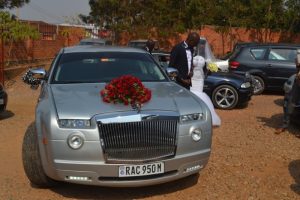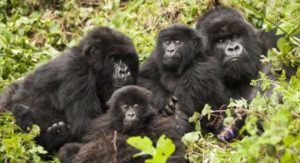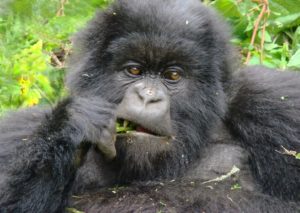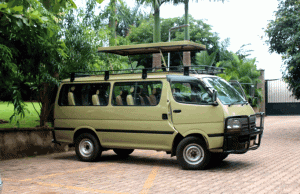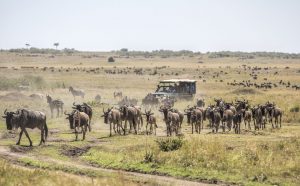All About Kampala City – History,Attractions & Car Rental
Kampala a capital and largest urban city of Uganda comprising 5 divisions that include the following:Makindye division, Kampala Central division, Rubaga division, Nakawa division and Kawempe division. Kampala City is endlessly expanding amidst Wakiso district with a population of at least 2 million people registered in the 2014 census making it one of the best cities to live in when in East Africa. Thousand of tourists on leisure and business vacations love to tour Kampala city and get chance to experience and learn more about the rich cultural and political history of Uganda. We present to you some vital travel information about Kampala including history, tourist attractions and how to get around.
History
The name “Kampala” was derived from the antelopes but specifically the Impala after the arrival of the British colonists. But prior to their arrival, the Kabaka of Buganda had selected the areas that would be Kampala a hunting ground given the fact that the areas consisted of rolling hills and grassy wetlands in the valley harboring the antelopes, Impala mainly.
Upon the arrival of the British, they named the hunting ground “Hills of the Impala” and the Baganda adopted several English words into their Luganda dialect due to their communications with the British. In Luganda, the Baganda translated “Hills of the Impala” as Akazosi ke’Empala. “Kazosi” meaning “hills” “Ke” meaning “of” and “Empala” meaning the plural form of “Impala”. The “Ka’ampala” in Luganda emerged meaning ‘That’s of the Impala”, referring to the hills. Shortly after, the name Kampala was adopted and expanded beyond the Kabaka’s hills as a capital of Buganda Kingdom with historic buildings that stand up to date like the Kasubi tombs constructed in 1881, Lubiri Palace, Buganda parliament and the Buganda Court of Justice.
In 1894, the British government officially erected as a protectorate in Buganda under Frederick Lugard; a British Administrator and extended to Ankole, Tooro and Bunyoro Kingdoms in 1896, and in 1905, the British government formally declared the whole territory a British colony up to 9th October 1962 when Sir Milton Obote led Uganda to independence where he then shifted the capital to Entebbe. He ruled as Uganda’s president until 1971 before his regime was ousted in a military coup by Idi Amin.
Amin went further by expelling the Asians within the country and attacked the Jews as well then he extended his dictatorship governance by evading into Tanzania which resulted into a Uganda-Tanzania war in 1978 damaging many buildings in Kampala be it Administrative, commercial or domestic. After Idi Amin was overthrown, the City has been beautified by newly constructed buildings, roads, hospitals, hotels, shopping malls and educational institutions.
Kampala Tourist Attractions & Areas of interest
Kasubi Tombs– This is the burial site for the Buganda kings and those with royal blood or members. All the four late Buganda monarchs were laid to rest here. They include: Muteesa I (1935-1884), Mwanga II (1867-1903) who died in exile and remains returned from the Seychelles Island in 1910, Daudi Chwa II (1896-1939) and Sir Edward Muteesa II (1924-1969) died in exile in London and his remains returned in 1971.
In 2001 Kasubi tombs was declared a UNESCO world heritage site because of its traditional hut built purely out of vegetal materials(Grass, wood and fibre) making it not only a cultural place but spiritual and political to the Ganda people. This site was under the management of Buganda kingdom which was and still is the most powerful kingdom in Uganda but in 1966, the then Prime Minister (President) Sir Apollo Milton Obote abolished the kingdoms and in 1993 the current Ugandan president Yoweri Kaguta Museveni revived the operation of Kingdoms countrywide.
Uganda Museum- This is the oldest museum in East Africa officially established by the British protectorate government with ethnographic material in 1908 after George Wilson asked for the objects that attract local and international attention to be gathered countrywide in 1902 to create a museum. It initiated in a small Sikh temple at Fort Lugard on Old Kampala hill but it became smaller and a spacious location was required to accommodate the specimens which led to its transfer to the Margret Trowel School of Fine Art in Makerere University College in 1941.
Later in 1954, the museum was relocated to a new home on Kitante hill where it exists up to date and it made its 100 years in 2008.
Uganda National Mosque- Formally known as Gadaffi mosque with a seating capacity of 15,000 people was constructed on old Kampala hill with aid from the Libyan government under the late Colonel Muamar Gadaffi. It was started by then Ugandan president Idi Amin Dada but ended on foundation level but in 2003 its construction resumed and was officially opened in 2007 after its completion. The guest of honor was Colonel Muamar Gadaffi himself.
The original Seven hills of Kampala- Kampala city stands on the seven hills which but has spread out to cover other hills like Kibuli hill, Mutungo hill, Naguru hill and Kireka hill. But the original 7 hills include the following.
-
- Mengo hill– On this hill rests the main palace of the Kabaka of Buganda kingdom called Lubiri or Mengo palace. The 1900 Buganda agreement was signed here between the Kabaka of Buganda and the British colonial officials which officially turned Uganda into a British protectorate. Kabaka’s Lake also exists here.
- Rubaga hill
This is where the Rubaga Cathedral is situated and the headquarters of the Catholic church in Uganda. - Namirembe hill- This hill has Namirembe cathedral on it with the headquarters of the Anglican Church in Uganda.
- Makerere hill- This hill is also known as the hill of the intellectuals because of the legendary Makerere University not forgetting that Mulago hospital can as we located on this same hill.
- Kololo hill- On Kololo hill, you find the Independence monument, Kololo Airstrip with a portion of it reserved as a burial ground for National heroes, and Administrative offices.
- Nakasero hill- This is where State House is located and countries 5 star hotels like Sheraton Kampala hotel, Grand Imperial hotel, Serena hotel and Speke hotel. It is home to several embassies in Uganda and harbors the elite class. The lower Nakasero has markets like Owino and Nakasero markets, Bus terminals and Taxi parks.
- Old Kampala hill
On this hill seats Uganda National Mosque formally known as Gadaffi mosque, headquarters of the Uganda Muslim Supreme Council and it is the spot near where Captain Frederick Lugard his fort. Beside the hill is Old Kampala Senior Secondary School.
Bahai Temple- This temple is situated on Kikaya hill after the Bahai faith was introduced in Uganda in 1950 and four years later there were 500 Bahais in 80 localities of the country.
Namugongo Martyrs Shrine
This is a worship place affiliated to the Roman Catholic Church and the Anglican Church in Namugongo Township, Kira Municipality, Wakiso district.
Munyonyo Martyrs shrine- It is a martyrdom place for leaders in the Royal enclave like St. Andrew Kaggwa and St. Dennis Ssebugwawo- Uganda martyrs killed by King Mwanga II on 26th May 1886 canonized by Pop Paul VI in 1964.
Rubaga cathedral- This is the oldest Roman Catholic diocese in Uganda and home church to the Archbishop of Kampala. It is originally called St. Mary’s Cathedral Rubaga on Rubaga hill.
Namirembe cathedral- This is the oldest Anglican cathedral in Uganda original known as St. Paul’s Cathedral situated on Namirembe hill.
Bulange- This is the Administrative headquarters of the Buganda kingdom and houses the Lukiiko (parliament) of the kingdom with Kabaka (King) and Katikkiro (Prime minister) having well maintained offices.
The Kabaka’s Palace- This is also known as Mengo palace was built in 1922. It is the main palace of Buganda Kingdom.
Getting Around Kampala city
Kampala city’s largeness makes it a hard destination to explore given the numerous marked and unmarked road routes and that’s why it’s advisable to rent a car in Kampala city with driver for safety and comfort purposes though you can as well get a car for self drive. Tristar Africa Skimmer Safaris is one of the best travel companies that offers a wide range of rental cars including sedans, 4×4 ,mini vans and buses to all types of travelers at pocket friendly rates. There are also public means of transport available though very unreliable and these include mini-van taxis, boda boda riders, coaster buses ,hotel shuttles among others.
Whther you would love to do guided tour around Kampala city or prefer driving yourself, we will be more than happy to organize this for you today. Call us on +256-758540071 or send an email to booking@tristarafricaskimmersafaris.com to request fro safari quote or book car.
